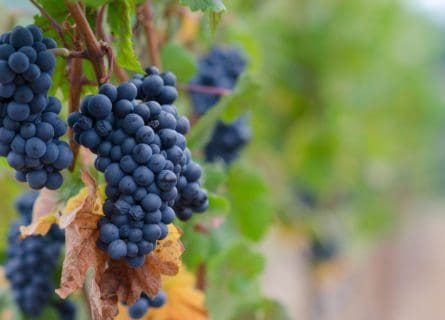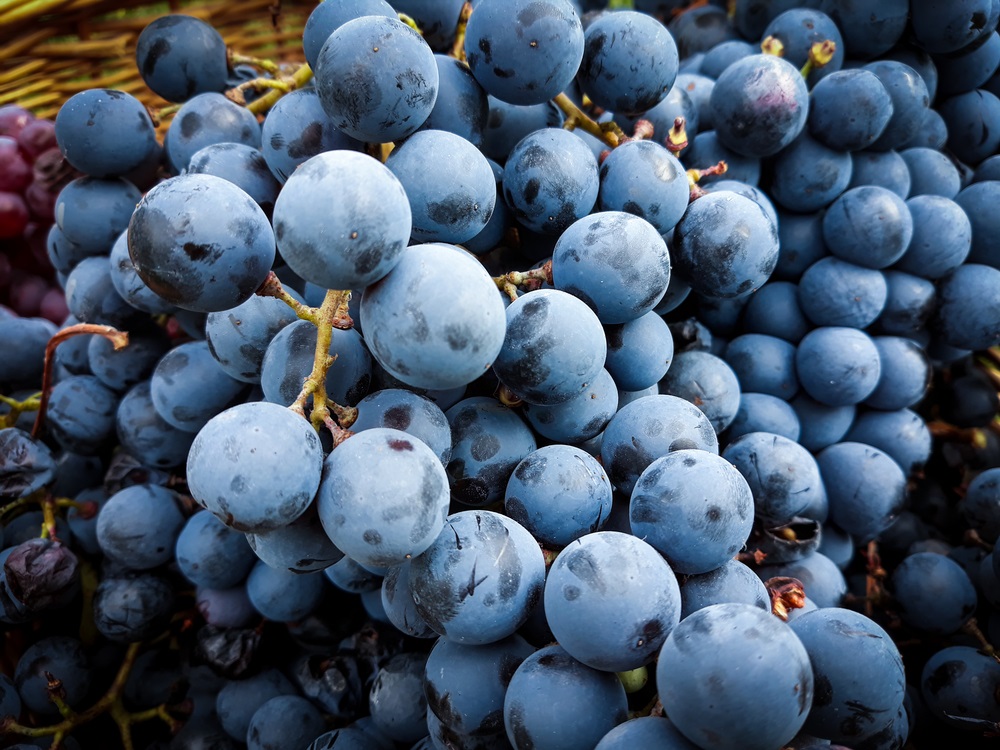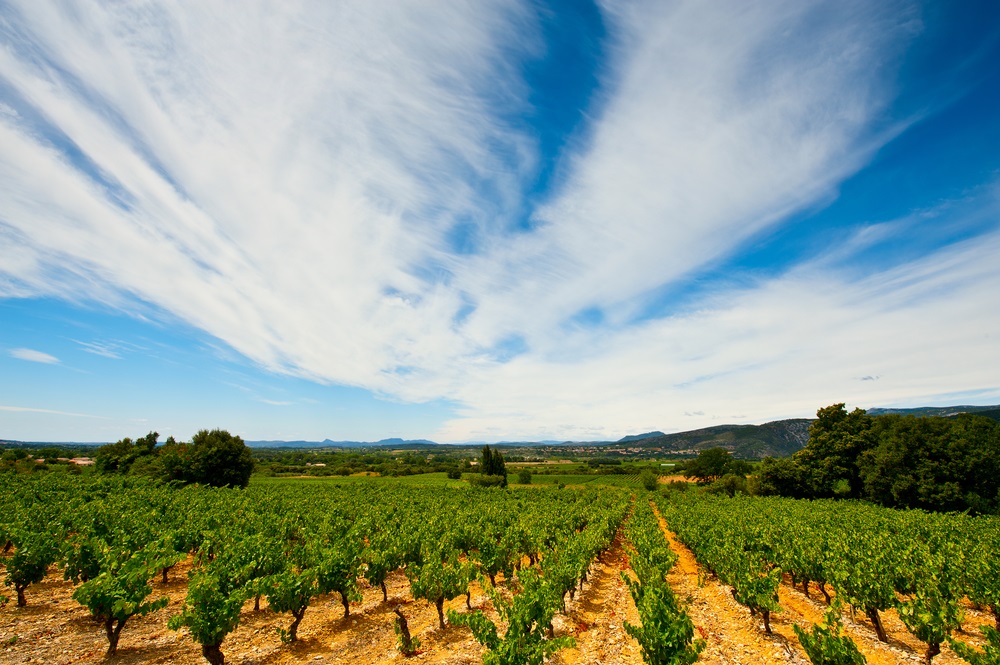
Pinot Noir Grape Variety: From the Sublime to the Ridiculous
March 4, 2022
Pinot noir is a light-bodied red wine varietal closely related to the Vitis vinifera grape and produces the most sought-after red wines in the world.
By: James lawrence / Last updated: February 3, 2025
Estimated reading time: 10 minutes
In 2010, wine producers, importers, and journalists attended the first International Grenache Symposium in the village of Crestet in the Southern Rhône Valley. The event was created by the grape’s most ardent supporters, passionately committed to transforming the winemaker and consumer perception of this historically maligned red variety.

Guide to French Red Wine: Read more
Have they succeeded? The high prices increasingly commanded by single-vineyard cuvées from Gigondas, Châteauneuf-du-Pape, Spain’s Priorat (Garnacha), and Australia’s McLaren Vale regions point towards a perception realignment. For most of the 20th century, Grenache was consigned to the role of the workhorse, adding alcohol (but little else) to amorphous blends of plonk made across the southern Mediterranean. Few winegrowers took the grape seriously, so consumers inevitably associated Grenache with cheap and cheerful wine. Prone to cropping at high yields, Grenache was mired in apathy – a fate arguably worse than being despised!
Yet the wine world turned a corner in the 21st century, largely thanks to the endless prosélytizing of influential winemakers like Alvaro Palacios. As a result, Grenache is increasingly seen as a vital part of the Mediterranean’s viticultural future, not least because it has a remarkable tolerance to heat and drought. In the context of global warming and increasingly torrid summers, Grenache is transforming from a poor relation into the savor of the Mediterranean.
Although the grape has been cultivated in the South of France for centuries, viticulturists believe that Grenache originated in Sardinia, imported into the Spanish region of Aragon in the 14th century. During the 1300s, Aragon established an empire in the Western Mediterranean, and Sardinia was a key target. As Spanish growers marveled at its ability to produce high yields even under challenging conditions, Grenache’s renown inevitably spread across the French border, becoming prolific in the 16th and 17th centuries. After phylloxera devastated French vineyards in the 19th century, Grenache’s popularity increased during the large-scale replanting program, as the grape adapted well to being grafted onto American rootstock.
Today, Grenache is one of the most widely planted red varieties globally. It dominates the Southern Rhône region, reaching an apogee in Châteauneuf-du-Pape and Gigondas. It is also achingly in vogue across the Languedoc-Roussillon – winegrowers are gaining the confidence to market 100% varietal cuvées, eschewing the tradition of ‘hiding’ Grenache amongst the classic GSM blends (Grenache, Syrah, and Mourvedre). Grenache is nothing if not versatile; fragrant rosé, powerfully structured reds, and gorgeous sweet wines are all made from the grape. It continues to shine as part of a blend or without a supporting act.
However, it would be disingenuous to claim that every example of Grenache being made today sets a high-quality bar. Too many poor-quality wines are lazily made due to poor site selection, overcropping, and indifferent winemaking. It takes a combination of superior terroir, judicious yields, and oenological expertise to get the best out of this variety. But if the winegrower succeeds, then the rewards are considerable.
The challenges they face are numerous. Yet, at first glance, Grenache is a gift from the gods; its robust wood canopy is a familiar sight in the South of France, filled with large bunches – and berries – in late September. In addition, the variety has shown good tolerance to heat, wind, and drought, even benefiting from hydric stress (to a degree), as this seems to increase the grape’s phenolic maturity and flavor ripeness.
Of course, appearances can be deceptive. If the winegrower has aspirations of high quality, then Grenache requires a great deal of hard graft. On the other hand, if the grape is cultivated on overly fertile soils, it will crop at very high levels, even if the vine is constantly pruned. The result is coarse and alcoholic and paradoxically dilutes the wine, lacking flavor and acidity. Its slow maturation rate is another mixed blessing – it ensures that Grenache can thrive in hot climates. Yet, it often leads to unwieldy levels of alcohol (16% and above) as growers wait for the phenolic ripeness to catch up with the rapidly accumulating sugar levels. It is also susceptible to several grapevine diseases, including coulure, bunch rot, and downy mildew. Lastly, it tends to oxidize very rapidly, becoming flat and monotone. All in all, Grenache can be a nightmare.
Thankfully, repeated trial and error has uncovered the secret to growing Grenache to its full potential. First, of course, the climate must be warm and dry, and the soils should ideally have a top layer of metamorphic rock, such as the schist and slate of the Rhône Valley and the famous galets roulés (round rocks) of Châteauneuf-du-Pape. Growers favor vines planted on these rock fragments. They prevent water evaporation from the soil surface. They reflect heat into the vine canopy, an important factor in the battle for quality, as irrigation tends to inflate the bunch sizes and subsequently dilute the wine. That said, cooler soils like limestone-rich marl can also give good results in the right climate.
Ultimately, as with other varieties, maintaining a low yield is vital. Old bush vines are hot commodities in the Southern Rhône and Languedoc-Roussillon, as they will produce small bunches of incredibly concentrated berries (sometimes less than six hectoliters per hectare). It is said that premium Grenache should never be cropped at above 35 hectoliters per hectare.
Grenache’s thin skins, relatively low tannin levels, and pale color make it an ideal candidate for producing fruit-driven rosé. Indeed, Provence’s rosé industry relies heavily on the grape, as do growers in the Languedoc. The grape juice is run off after a very short maceration and cold-fermented like white wine, producing lovely aromatic rosé —ideal for summer quaffing.
The best Grenache red wines involve a deftness of touch in the winery. Winemakers generally advocate a gentle and slow temperature-controlled fermentation, with minimal racking to prevent premature oxidation. Certain growers in the Rhône have been experimenting with carbonic maceration (the technique used to make Beaujolais) to produce lighter, elegant wines. Others favor whole bunches in the vat, while many use a mixture of destemmed whole bunches and crushed fruit.
However, the biggest dividing line tends to be the subject of oak maturation. Those in favor of using new French barrique insist that it strengthens the color, adding much-needed structure and potency to the wine. But traditionalists abhor this practice, arguing that it spoils Grenache’s fruity character. In Châteauneuf-du-Pape, for example, many houses age their wines in old oak vats (called foudres) for between 18-30 months. Elsewhere, stainless steel, concrete, and ceramic amphora are favored. With the addition of grape spirit, Grenache also makes delicious sweet wines such as Banyuls and Rivesaltes in the Roussillon.

Grenache has played a significant role in the wines of Châteauneuf-du-Pape for many decades. Although the appellation rules permit over 12 varieties – Syrah and Mourvedre being the most common – in the final blend, Grenache constantly forms the backbone of any good Châteauneuf-du-Pape. The greatest wines (poor vintages are seldom witnessed in the area’s dry and warm climate) are a fantastic showcase for the grape’s charms. Rich, concentrated, and perfumed, they take on a gamey and sumptuous quality after a decade of bottle age—plum, strawberry, cigar box, and mocha dance across the mid-palate, supported by silky tannins. Many growers blend from across the region, combining the best elements of different climats (individual vineyards) to craft a signature cuvée. However, a growing firmament is committed to single-vineyard styles and mono-varietal cuvées designed to showcase Grenache in all its glory.
The appellation’s closest rival is Gigondas, northeast of the Châteauneuf-du-Pape village. The quality of the local reds, often Grenache-dominated blends, can equal the best of its more globally-recognized neighbor. Yet there are noticeable stylistic differences due to the abundance of colder calcareous terroir, which yields less powerful reds, offering beautiful aromas and more freshness. The area under vine extends east of the river Ouveze, moving southeast towards the Dentelles de Montmirail mountains. Higher altitude sites are typically blended with warmer terroirs to achieve that lovely balance between freshness and concentration. Since 2009, single-varietal cuvées have been permitted, which trailblazing wineries increasingly take advantage of.
But there are other gems to be discovered in this beautiful region. Awarded its appellation in 1990, Vacqueyras achieves remarkable things with Grenache planted on sandy/stony terroir. The wines have a distinct scent of garrigue combined with red berries, plum, and saffron flavors. Most producers eschew new oak as it spoils the natural exuberance of the fruit. There are bargains to be found in the emerging Ventoux and Luberon zones, while Cotes du Rhône Villages remain the best value Rhône red.
Meanwhile, lovers of sun-kissed rosé must acquaint themselves with Tavel. Grenache rosé has long been a specialty of the area, situated on the other side of the river from Châteauneuf-du-Pape. However, the once-heavy style has become lighter in recent years as producers seek to compete with the best of Provence.
Although the southern Rhône remains the undisputed heartland of superlative Grenache, the Languedoc-Roussillon is catching up fast. The organic and biodynamic movement, spearheaded by pioneers like Gerard Bertrand, leads to stunning Grenache wines. The grape thrives across the zone’s incredibly diverse terroirs, often managed by small family-run domaines. There is an abundance of rocky clay and limestone, in addition to schist, marlstone, sandstone, and alluvial gravels. But, then, it is little wonder that Grenache comes in so many guises in the South of France, from dainty rosé to immensely concentrated, structured, and ripe wines.
It is almost impossible to pick a ‘Grand Cru’ from the wider region’s appellations and sub-zones. Yet we can say that Minervois, situated in the western Languedoc, is undoubtedly a strong contender. The zone of La Liviniere is particularly renowned for the finesse and depth of its Grenache wines – Gerard Bertrand is a key investor, producing a super-expensive cuvée called Clos d’Ora, which is worth every cent. Grenache, Syrah, and Mourvedre unite spectacularly, creating a wine of unparalleled intensity, a flamboyant and wild creature demanding bottle-age. The depth and concentration of fruit are outstanding.
Does Minervois La Liviniere have a rival? Potentially in the appellation of La Clape, which also releases a growing number of fine red wines, Grenache grows exceptionally well on well-drained soils, a mixture of sandstone, clay, and sand. The local trademark is pungent aromas of ripe blackberry and mulberry.
Far more than a suffix to the Languedoc, the dessert wines of Roussillon are also legendary in this part of the world. Ripeness is not an issue in this hot climate, with the harvest typically occurring in August. Instead, the grapes are used to make ‘Vins Doux Naturels,’ a gorgeous style that involves stopping the fermentation with the addition of grape spirit. Banyuls is the finest of France’s fortified sweet wines, with the best examples aged in old wood barrels before bottling, imbuing the wines with a sherry-like oxidative character and flavors of pine nuts, fruit cake, and cigar box.
Global warming has taken no prisoners in the world of viticulture. Unbelievably hot vintages like 2018 in the Languedoc led to scorched vines, massive crop losses, and a surfeit of alcoholic dross in the winery. As a result, there has been talk of planting new heat-resistant hybrids in certain zones, while others favor altitude as the secret weapon against climate change.
But in one sense, this upheaval can only benefit Grenache’s standing and reputation in France. The grape has a proven track record of surviving the most drought-ravaged and challenging conditions. This fact, combined with a bourgeoning revival in the variety’s popularity, promises a bright future. Rising global plantings, new brands coming to market, and a rash of investments suggest that this is Grenache’s moment. This once-derided red grape has turned a corner and will hopefully never look back.
If you would like us to customize an exclusive luxury tour, contact us and let us know your travel plans. We offer luxury food and wine tours for private groups of a mininium two guests. In addition, all of our private, chauffeured tours are available year-round upon request.

